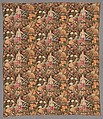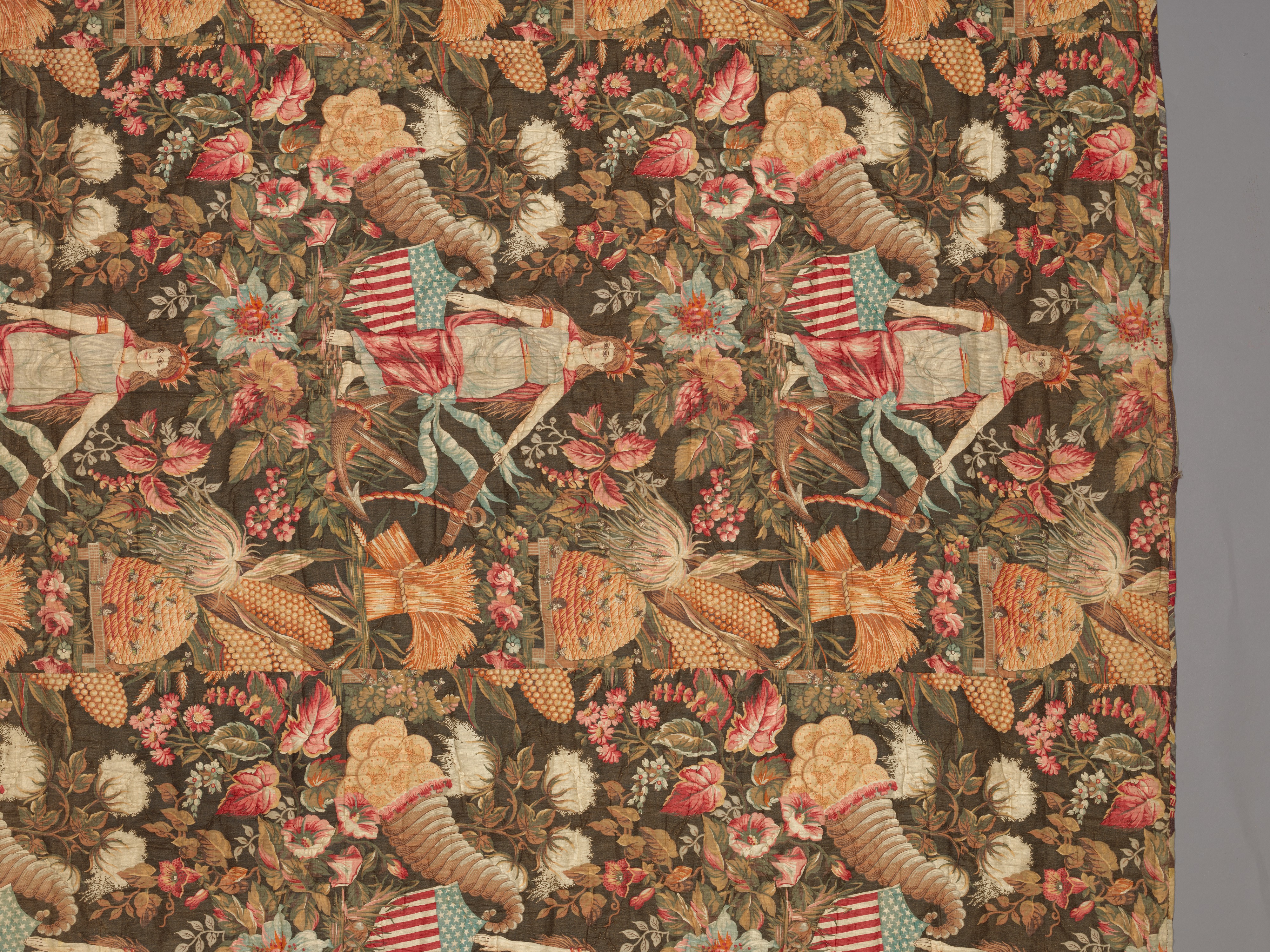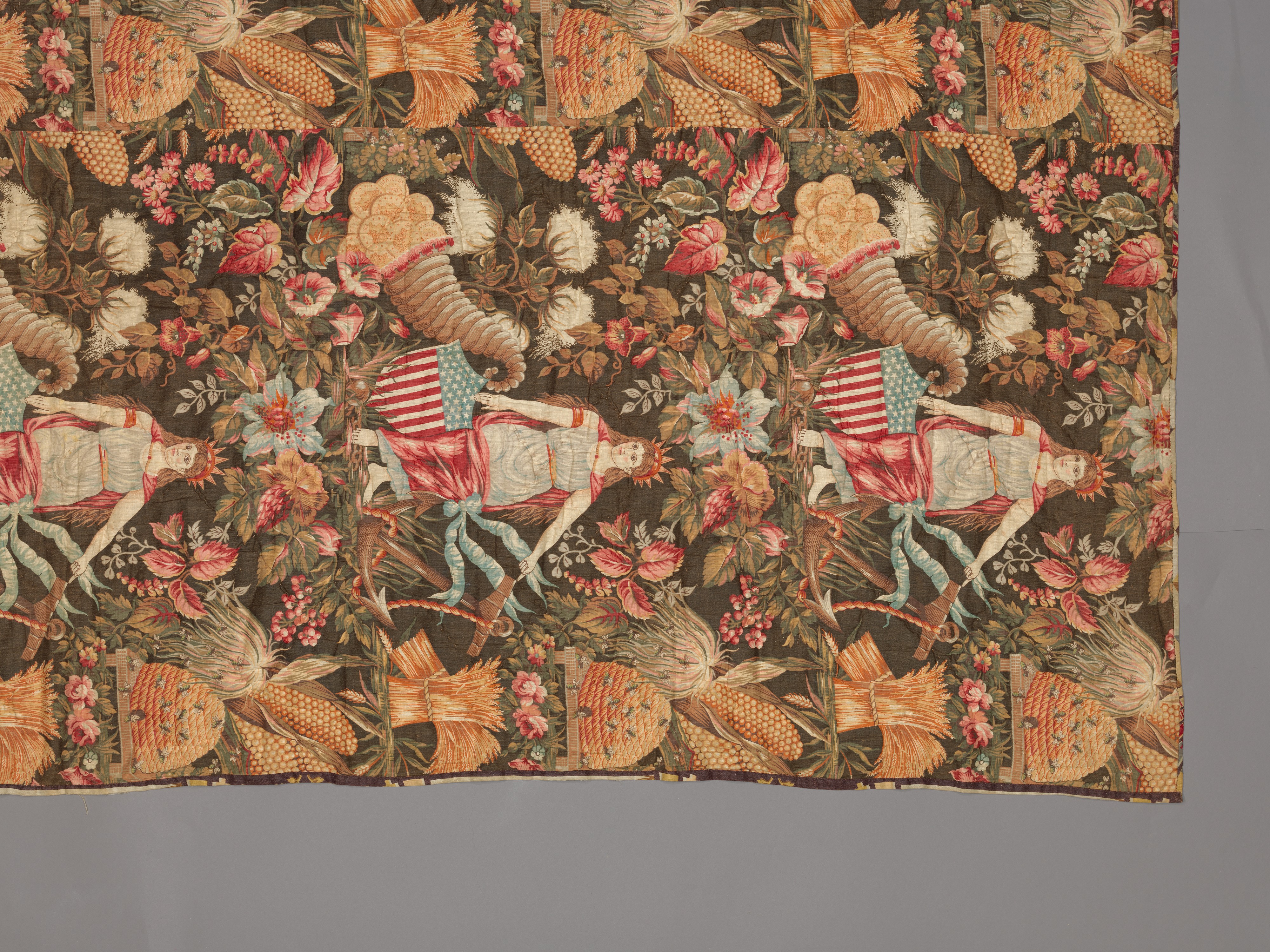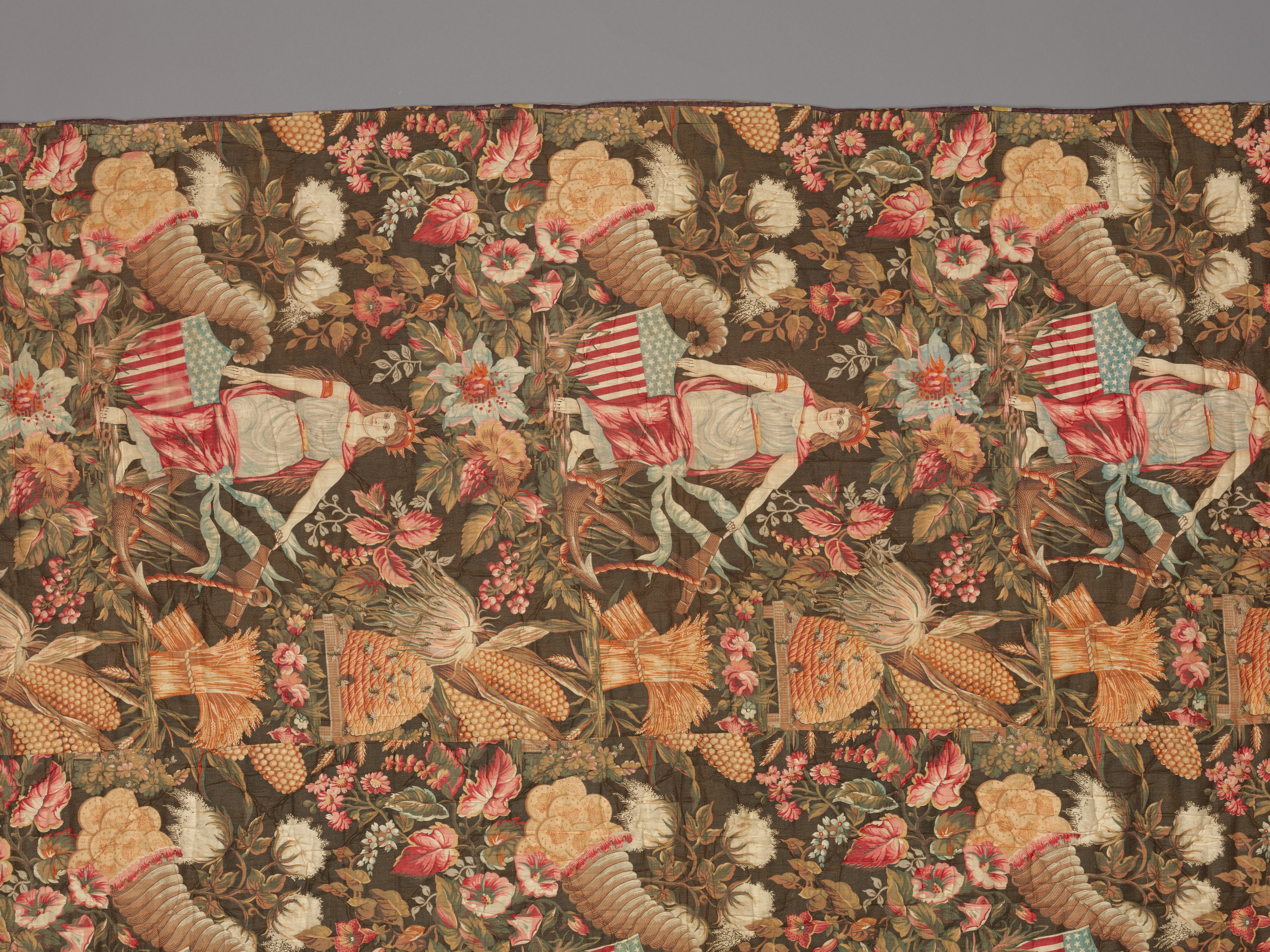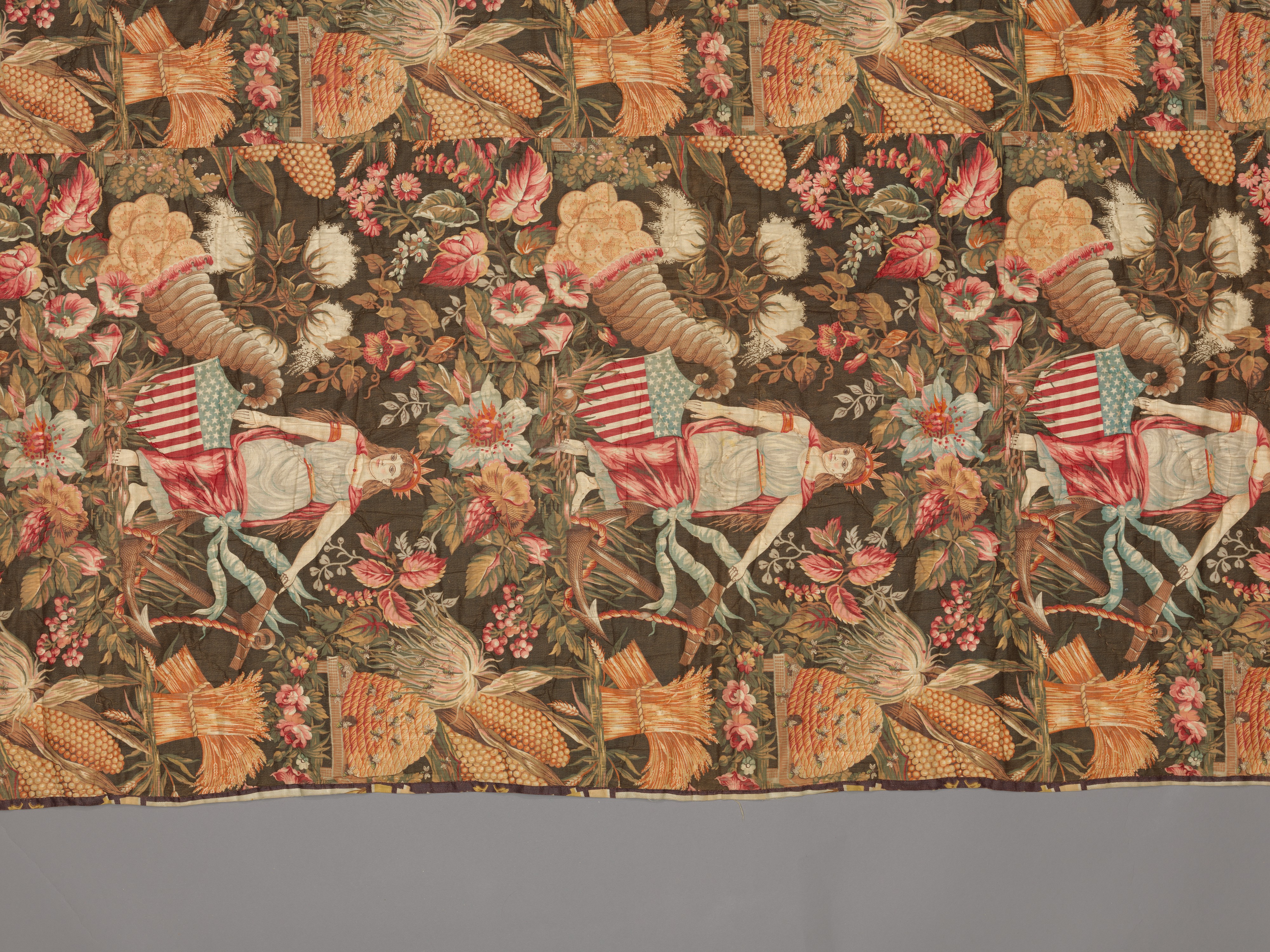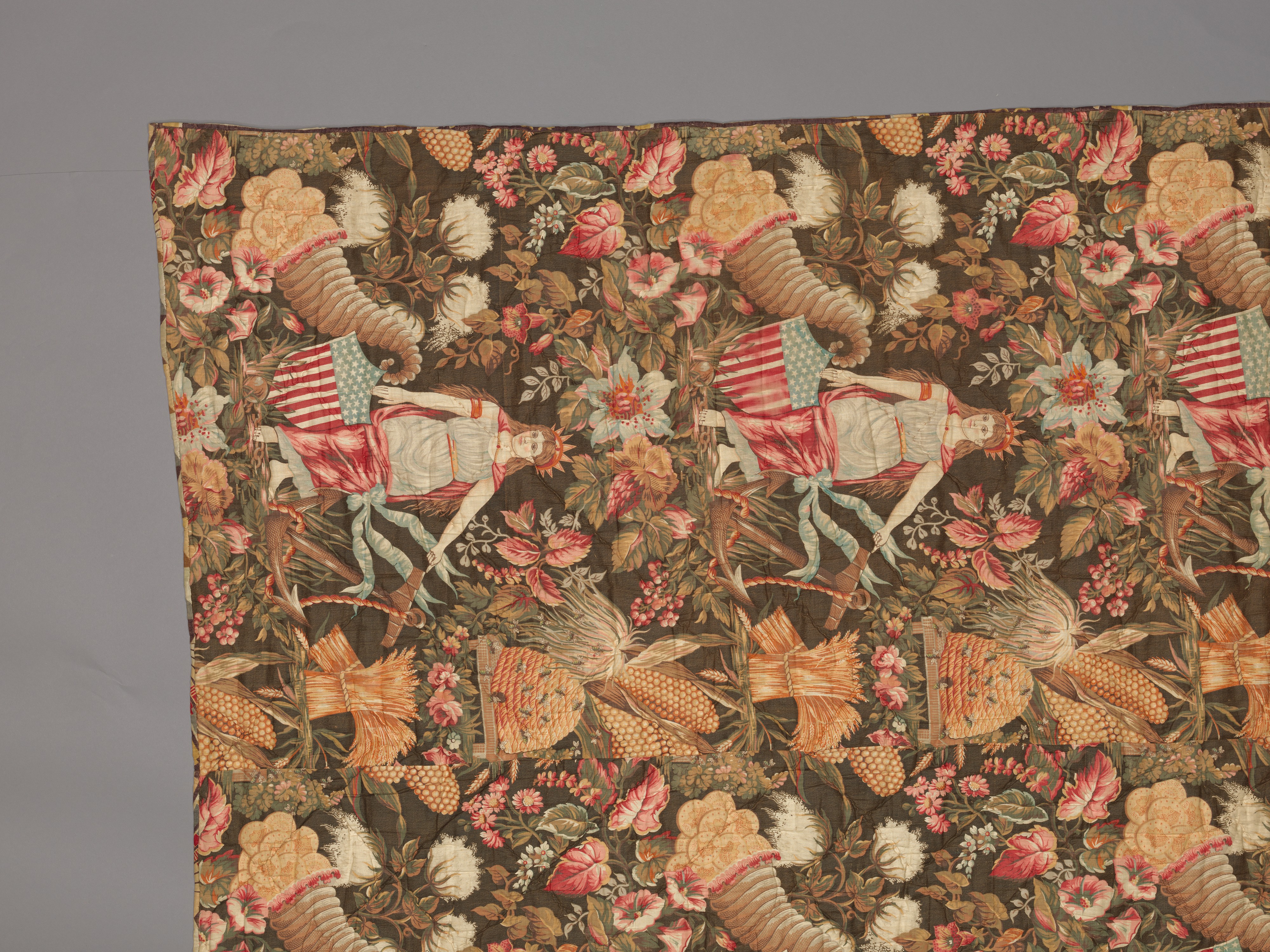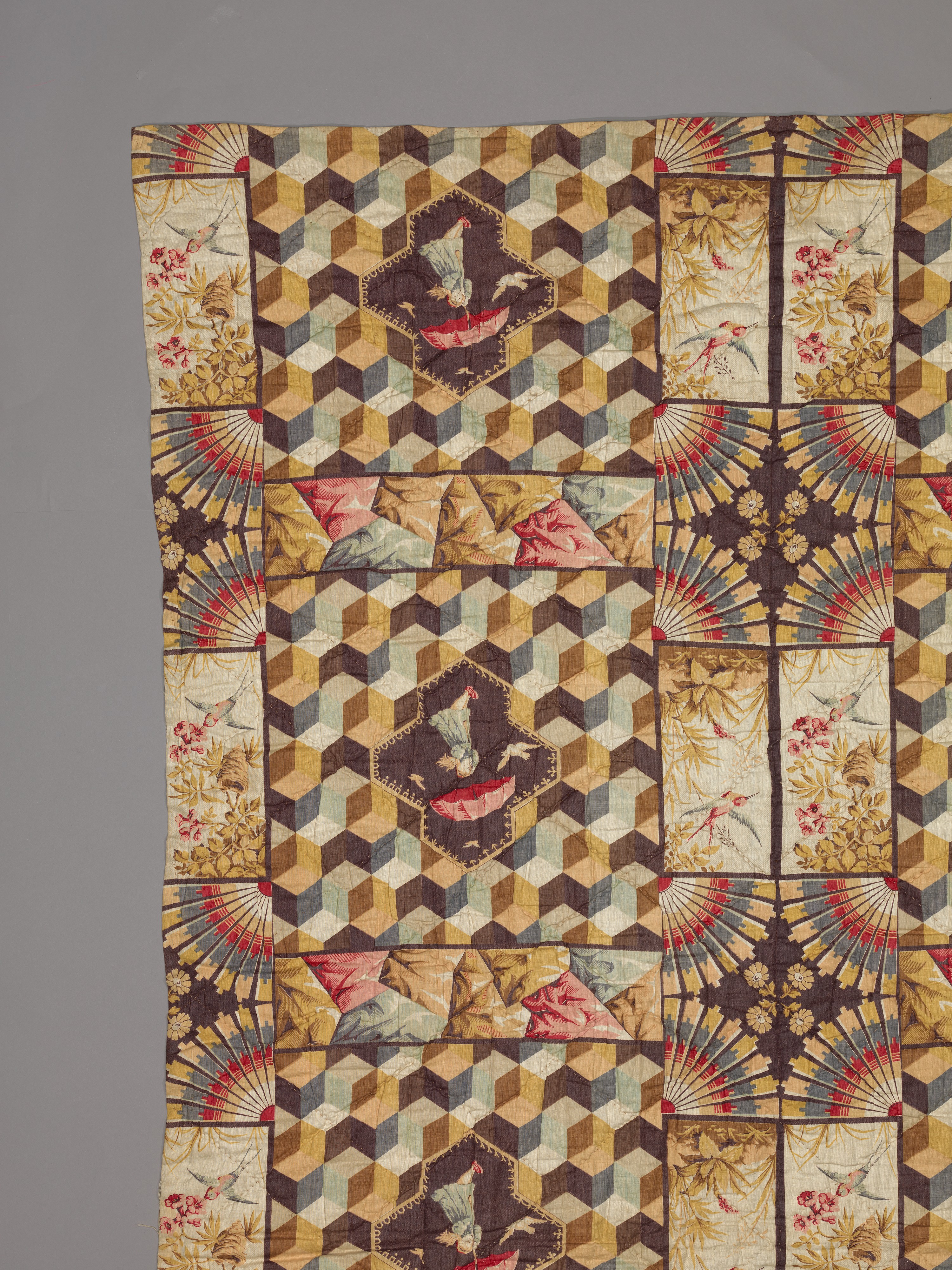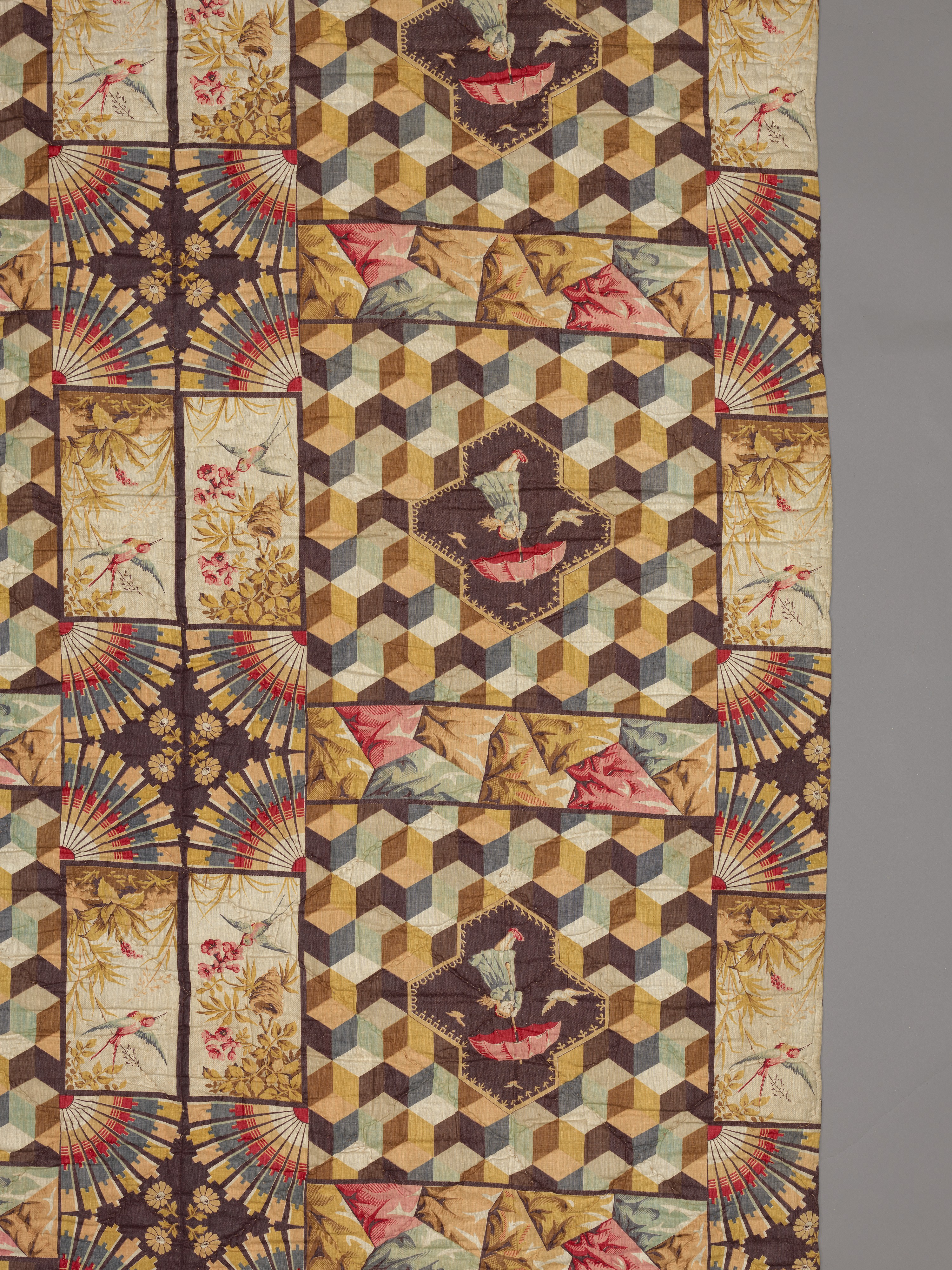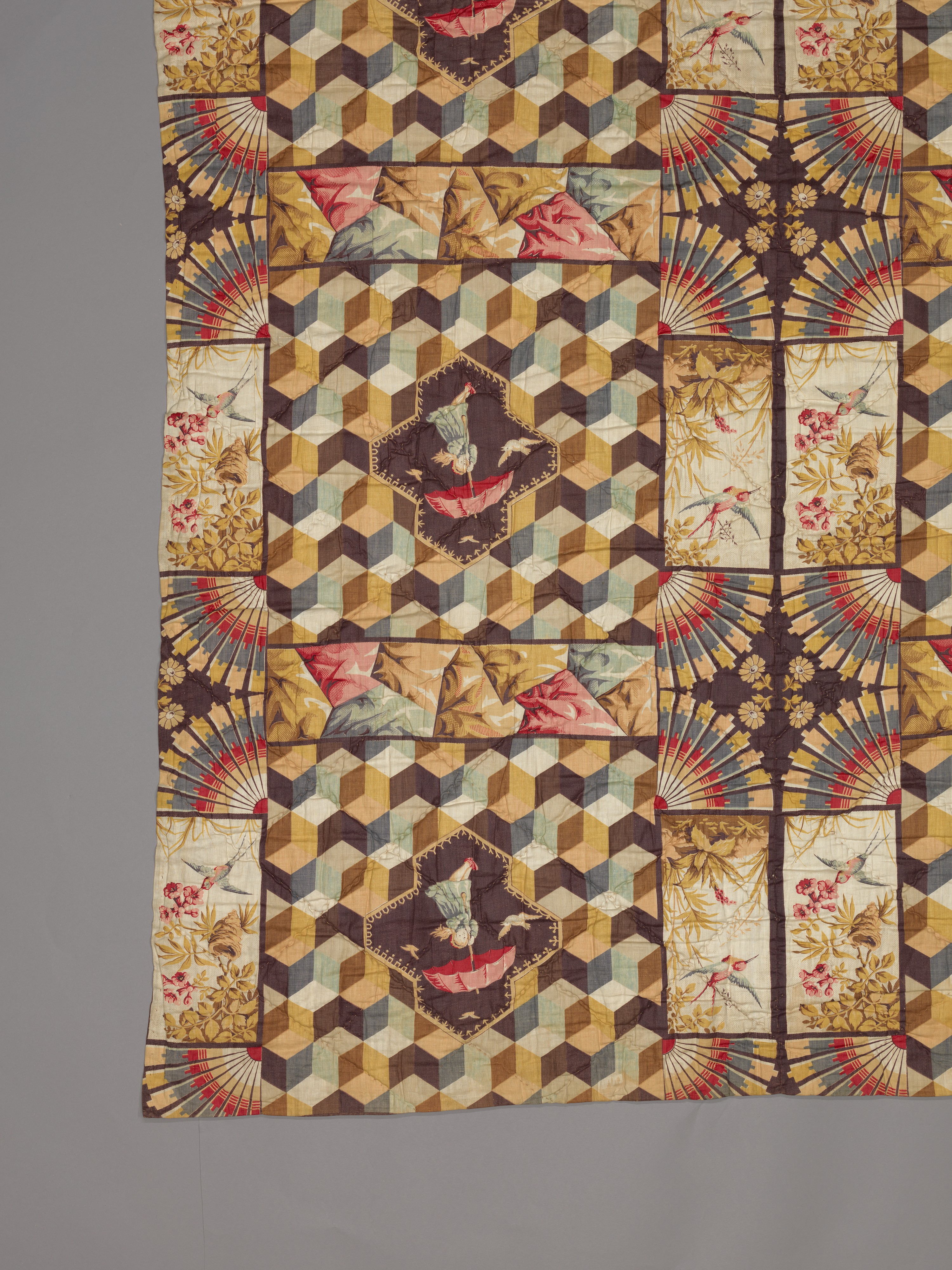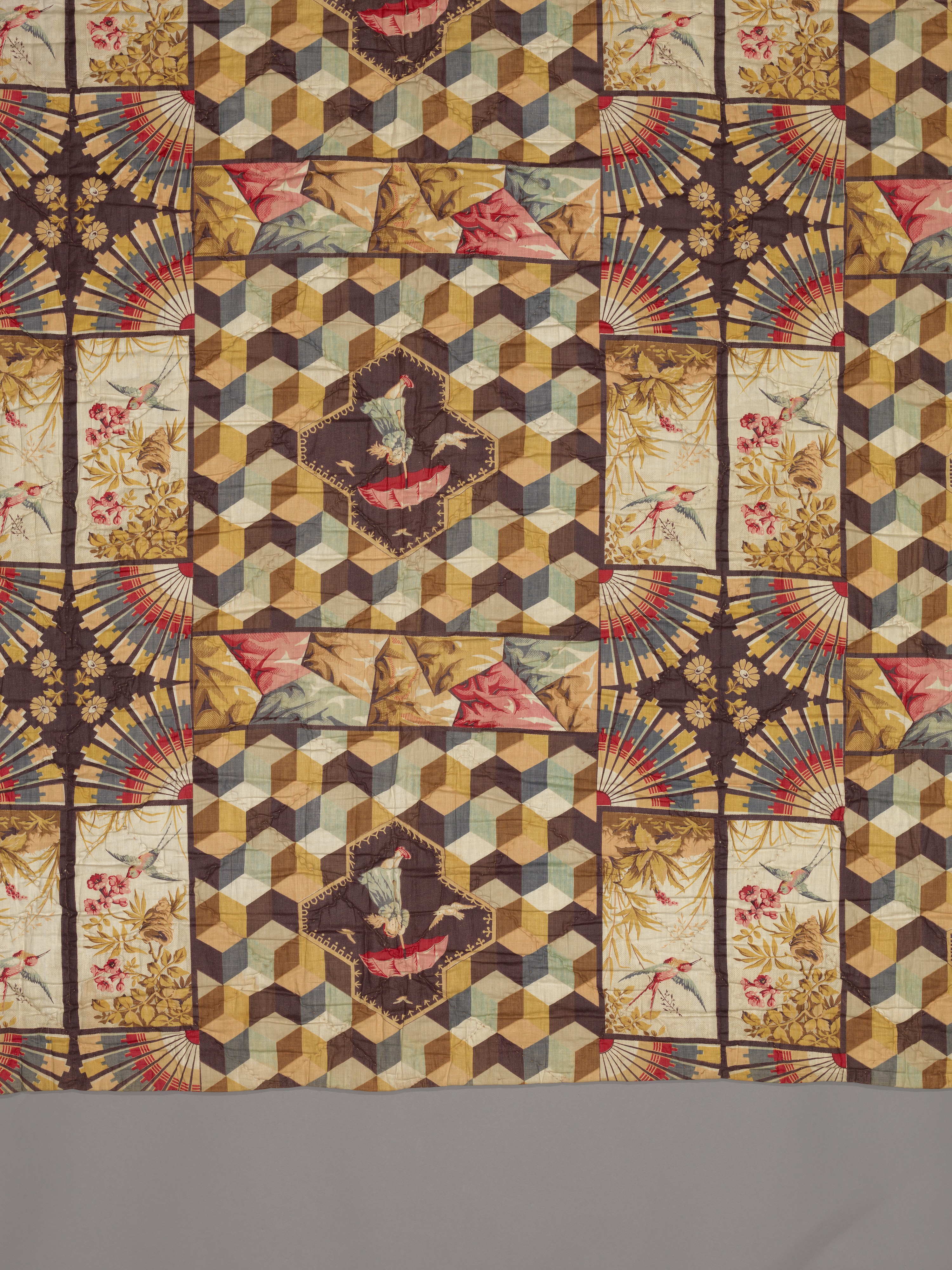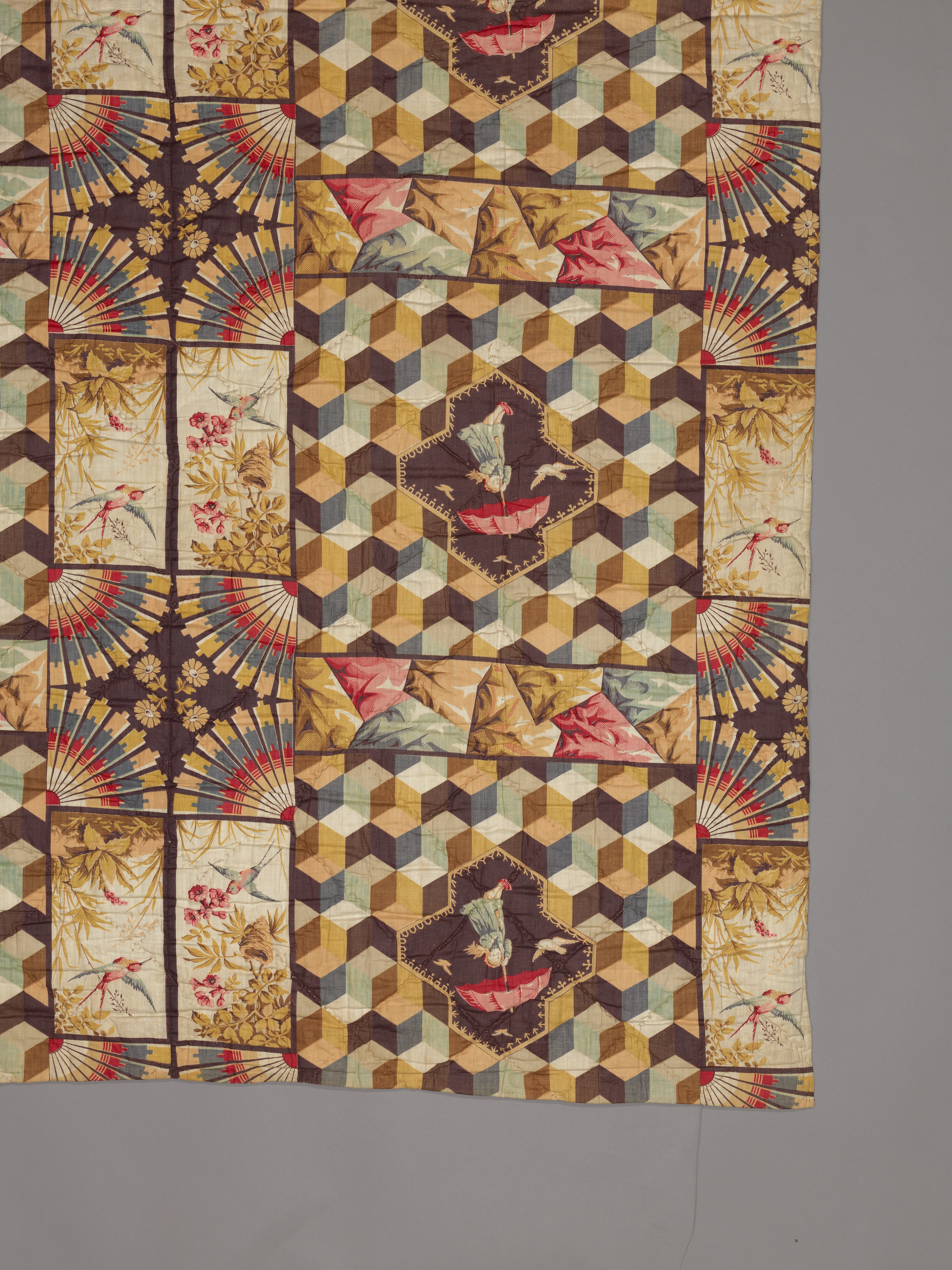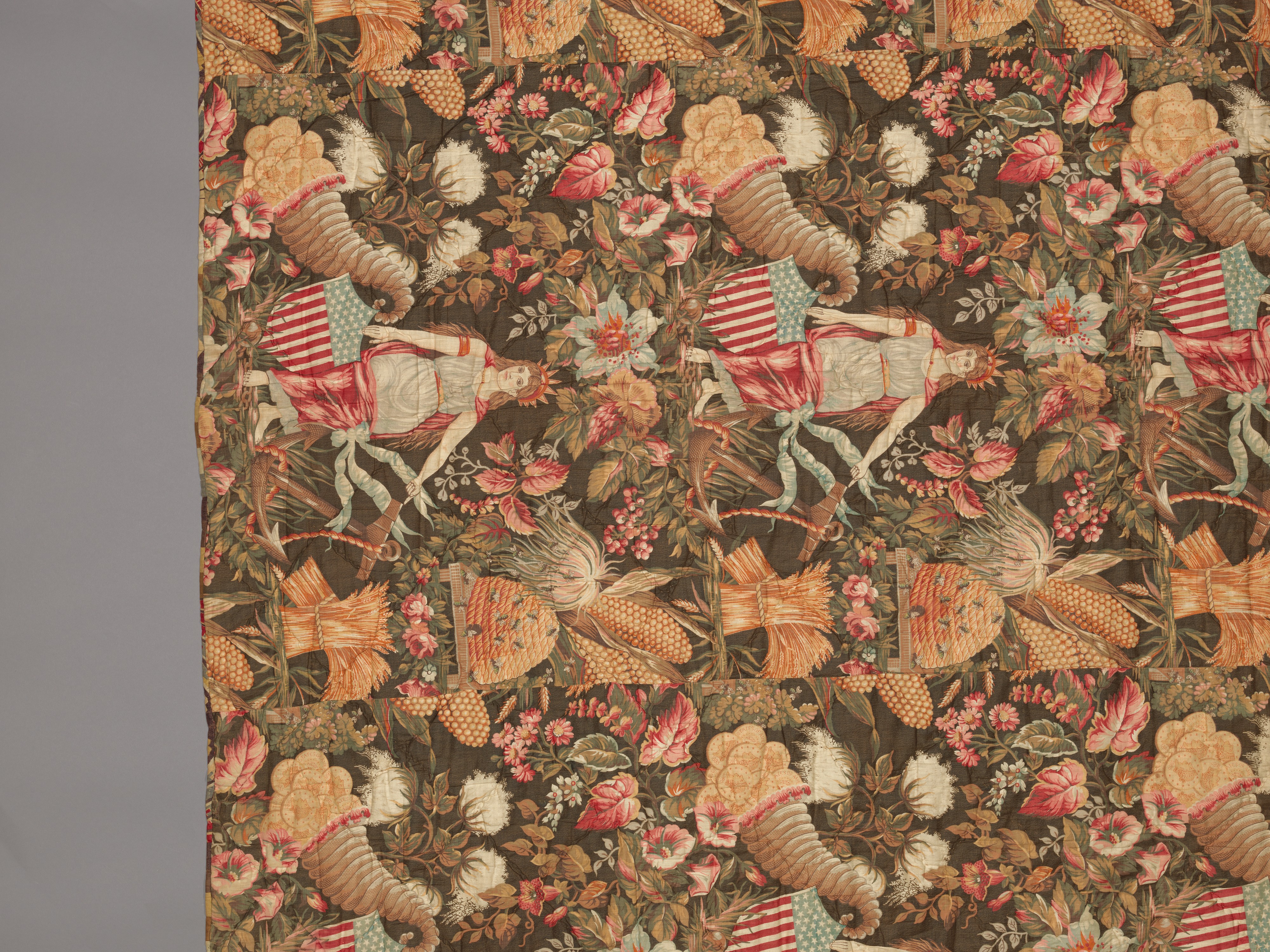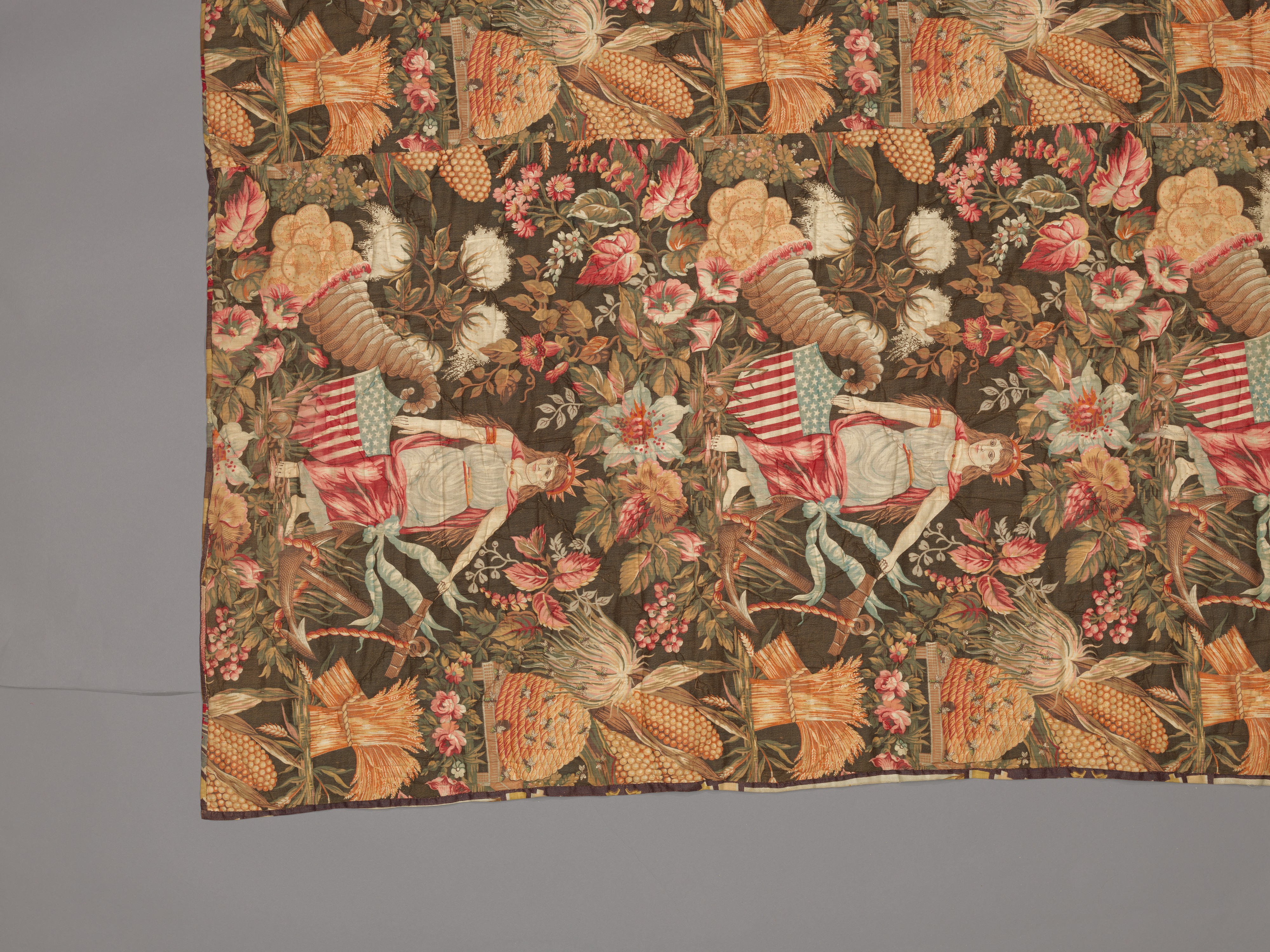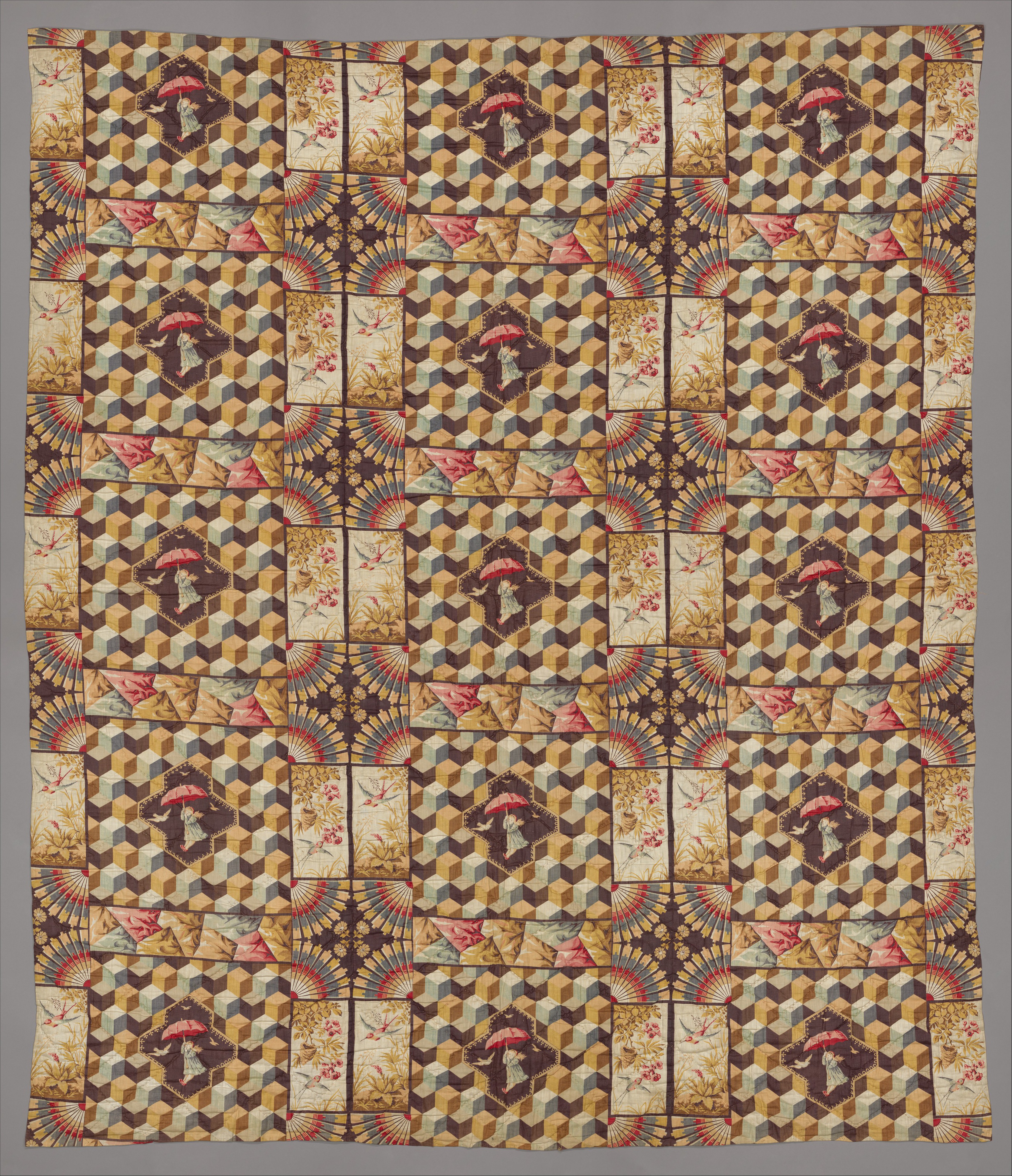Whole cloth quilt
Not on view
This quilt is made of two different printed cottons on the front and back, stuffed with a layer of cotton batting, and quilted together in a diamond pattern. The back fabric is turned over the front and stitched down to form the edge binding. The front is constructed of three panels of fabric running vertically. The multicolored print shows a repeating naturalistic pattern of Miss Liberty, with a shield-shaped American flag in her right hand and an anchor in her left. To the right of the shield there is a cornucopia from which large gold dollar coins spill. The coins also show Liberty’s head in profile, and the date 1885. Miss Liberty is surrounded by images of the agricultural bounty of the United States, including sheaved of wheat, ears of corn, bolls of cotton, and beehives. The back is also constructed out of three panels of fabric, one more "artistic" than naturalistic. The main repeating motif is of printed panel of "Tumbling Blocks" pattern patchwork. This type of pattern was known as "cheater cloth" because it was a printed imitation of patchwork. At the center of the panel there is an imitation cruciform "patch" that shows a little girl with a large red umbrella floating in the sky with three white birds.
The direction of the pattern of the printed fabric on the front and back are opposite from one another. This may be intentional, since if the top of the quilt was folded over when the bed was made, the patterns would both run the same direction to the viewer.
Quilts like this one and others in the Met’s collection (1986.342, 2007.342) demonstrate the "artistic" but inexpensive cloth desired by most common Americans for home decoration. This quilt shows the innovative design of American-made cloth in the 1880s, produced when the New England mills and printworks were at the height of their powers.
Due to rights restrictions, this image cannot be enlarged, viewed at full screen, or downloaded.
This artwork is meant to be viewed from right to left. Scroll left to view more.
